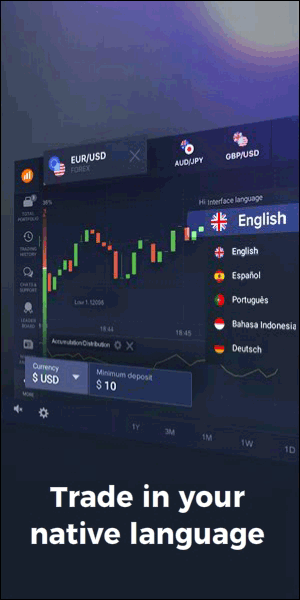Understanding the Basics of Gold and Precious Metals Investment
Investing in gold and precious metals has been a popular strategy for centuries. These assets are often seen as a safe haven during times of economic uncertainty. However, like any investment, there are rules and guidelines that can help you make informed decisions. This article will delve into the essential rules for investing in gold and precious metals, providing you with valuable insights to navigate this market effectively.
Why Invest in Gold and Precious Metals?
Before diving into the rules, it’s crucial to understand why investors turn to gold and precious metals. These assets offer several benefits:
- Hedge Against Inflation: Gold and precious metals often retain their value even when the purchasing power of currency declines.
- Portfolio Diversification: Including these assets in your portfolio can reduce risk and enhance returns.
- Safe Haven: During economic or geopolitical turmoil, investors flock to gold and precious metals for stability.
Types of Precious Metals for Investment
While gold is the most well-known precious metal, there are several others worth considering:
- Gold: The most popular and widely traded precious metal.
- Silver: Often more volatile than gold but offers significant investment opportunities.
- Platinum: Rarer than gold and silver, often used in industrial applications.
- Palladium: Gaining popularity due to its use in automotive and electronics industries.
Key Rules for Investing in Gold and Precious Metals
1. Understand the Market Dynamics
Before investing, it’s essential to understand the market dynamics of gold and precious metals. These markets are influenced by various factors, including:
- Supply and Demand: The availability of precious metals and the demand for them can significantly impact prices.
- Economic Indicators: Inflation rates, interest rates, and economic growth can affect the value of precious metals.
- Geopolitical Events: Political instability, wars, and trade disputes can drive investors towards safe-haven assets like gold.
2. Determine Your Investment Goals
Clearly define your investment goals before entering the precious metals market. Are you looking for short-term gains or long-term stability? Your goals will influence your investment strategy and the types of precious metals you choose.
3. Choose the Right Form of Investment
There are several ways to invest in gold and precious metals, each with its own advantages and disadvantages:
- Physical Bullion: Buying physical gold, silver, platinum, or palladium in the form of bars or coins.
- Exchange-Traded Funds (ETFs): Investing in ETFs that track the price of precious metals.
- Mining Stocks: Investing in companies that mine precious metals.
- Futures and Options: Trading contracts that speculate on the future price of precious metals.
4. Assess the Costs Involved
Investing in precious metals comes with various costs that you need to consider:
- Storage Costs: If you buy physical bullion, you’ll need a secure place to store it, which can incur additional costs.
- Transaction Fees: Buying and selling precious metals often involves transaction fees.
- Insurance: Insuring your physical bullion against theft or damage is another cost to consider.
5. Diversify Your Portfolio
Diversification is a key principle in investing. Don’t put all your money into one type of precious metal. Spread your investments across different metals and other asset classes to reduce risk.
6. Monitor Market Trends
Stay informed about market trends and news that could impact the value of your investments. Regularly review your portfolio and make adjustments as needed to align with your investment goals.
7. Be Patient
Investing in gold and precious metals often requires patience. These assets can be volatile in the short term but tend to hold their value over the long term. Avoid making impulsive decisions based on short-term market fluctuations.
Practical Tips for Investing in Gold and Precious Metals
1. Start Small
If you’re new to investing in precious metals, start with a small investment. This allows you to learn the market dynamics without risking a significant portion of your capital.
2. Use Dollar-Cost Averaging
Dollar-cost averaging involves investing a fixed amount of money at regular intervals, regardless of the asset’s price. This strategy can help you avoid the pitfalls of trying to time the market.
3. Consider Professional Advice
If you’re unsure about your investment strategy, consider seeking advice from a financial advisor who specializes in precious metals. They can provide valuable insights and help you make informed decisions.
4. Stay Informed
Keep yourself updated with the latest news and trends in the precious metals market. Subscribe to industry publications, follow market analysts, and participate in investment forums to stay informed.
5. Avoid Scams
Be cautious of scams and fraudulent schemes in the precious metals market. Always buy from reputable dealers and verify the authenticity of the metals you’re purchasing.

Conclusion
Investing in gold and precious metals can be a rewarding strategy if done correctly. By understanding the market dynamics, setting clear investment goals, choosing the right form of investment, and following the key rules outlined in this article, you can navigate the precious metals market with confidence. Remember to diversify your portfolio, stay informed, and be patient. With careful planning and informed decisions, you can make the most of your investments in gold and precious metals.
Q&A Section
Q1: What are the main benefits of investing in gold and precious metals?
A1: The main benefits include hedging against inflation, portfolio diversification, and acting as a safe haven during economic or geopolitical turmoil.
Q2: What types of precious metals can I invest in?
A2: You can invest in gold, silver, platinum, and palladium.
Q3: What are the different forms of investing in precious metals?
A3: You can invest in physical bullion, ETFs, mining stocks, and futures and options.
Q4: What costs should I consider when investing in precious metals?
A4: Consider storage costs, transaction fees, and insurance costs.
Q5: How can I diversify my portfolio when investing in precious metals?
A5: Spread your investments across different types of precious metals and other asset classes.
Q6: What is dollar-cost averaging?
A6: Dollar-cost averaging involves investing a fixed amount of money at regular intervals, regardless of the asset’s price.
Q7: Should I seek professional advice for investing in precious metals?
A7: If you’re unsure about your investment strategy, seeking advice from a financial advisor who specializes in precious metals can be beneficial.
Q8: How can I stay informed about the precious metals market?
A8: Subscribe to industry publications, follow market analysts, and participate in investment forums.
Q9: How can I avoid scams in the precious metals market?
A9: Always buy from reputable dealers and verify the authenticity of the metals you’re purchasing.
Q10: Is investing in precious metals suitable for short-term gains?
A10: Precious metals can be volatile in the short term but tend to hold their value over the long term. Patience is key for long-term stability.
For more detailed information on investing in gold and precious metals, you can refer to this Investopedia article.







